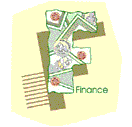Time exerts the greatest influence on your investment portfolio than any other force.
 Through the power of compounding, a small amount of money over time can grow into a substantial sum. Compounding is an investor’s best friend. Investments can increase in value over time – and the longer the time frame, the greater the value. This is achieved through returns that are earned, but not spent. When the return is reinvested, you earn a return on the return and a return on that return and so on. Therefore it is important to start saving early in order to benefit from the power of compounding returns.
Through the power of compounding, a small amount of money over time can grow into a substantial sum. Compounding is an investor’s best friend. Investments can increase in value over time – and the longer the time frame, the greater the value. This is achieved through returns that are earned, but not spent. When the return is reinvested, you earn a return on the return and a return on that return and so on. Therefore it is important to start saving early in order to benefit from the power of compounding returns.
Examples of Compounding
1) This involves calculating interest for terms longer than one year. How it works is that the interest earned on the previous year is worked out and added to the amount invested. So the investor ends up receiving interest on interest already earned. The example below shows how an initial investment of $1,000 grows to $31,409 over a period of time.
|
Year |
Principal |
Rate of return |
Return earned |
Principal + return |
|
1 |
1,000 |
9% |
90 |
1,090 |
|
2 |
1,090 |
9% |
98 |
1,188 |
|
10 |
2,172 |
9% |
195 |
2,367 |
|
20 |
5,142 |
9% |
463 |
5,604 |
|
40 |
28,816 |
9% |
2,593 |
31,409 |
Note that the Principal + return from the first year become the principal for the second year, and that the Principal + return from the second year become the Principal for the third year and so on.
2) The younger you are when you start investing, the more you will benefit from compounding. Let’s say you begin investing at age 25, putting $200 a month in a tax-deferred retirement plan earning 9%. Your friend starts investing in the same plan at 45, but puts away twice as much money as you – $400 a month.
At age 65, you will both have invested a total of $96,000, but your investment would have grown to $884,000, while your friend’s investment would be worth only $268,000. The reason your investment has grown so much more than your friend’s – even though you both invested the same amount of money – is because of 20 extra years of compounding.